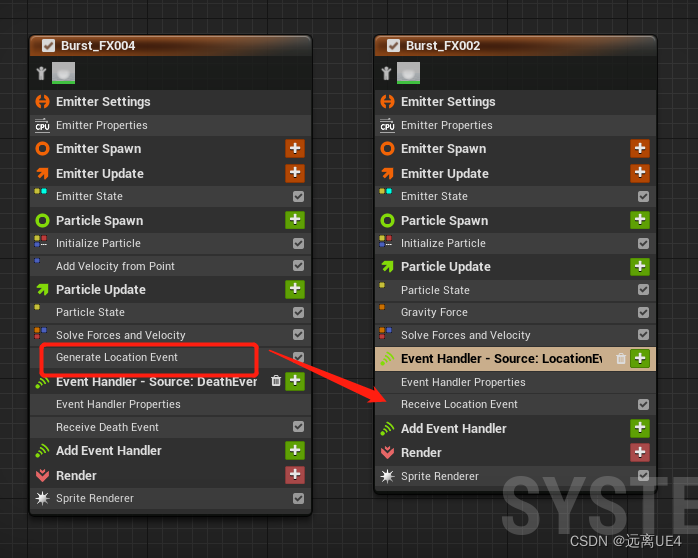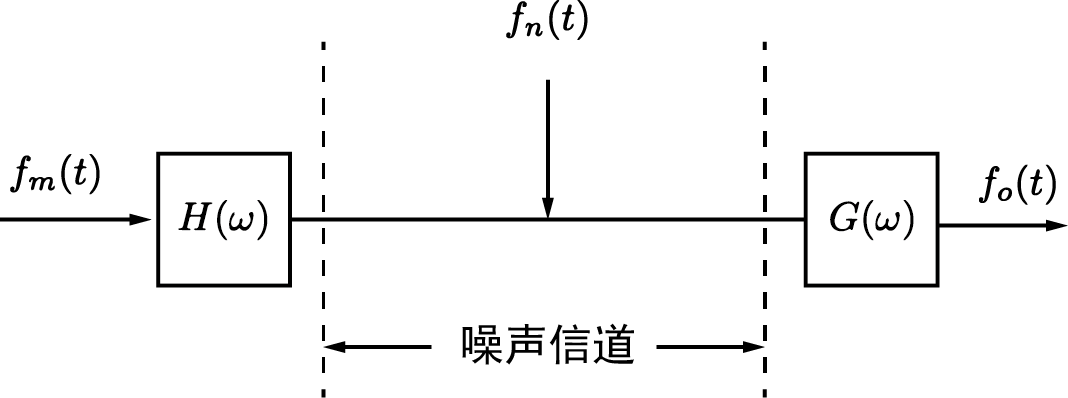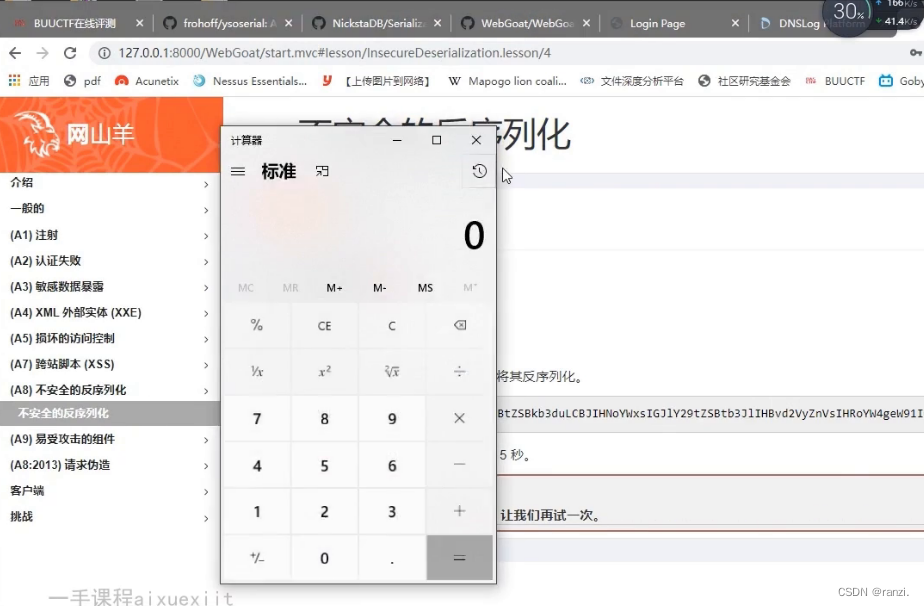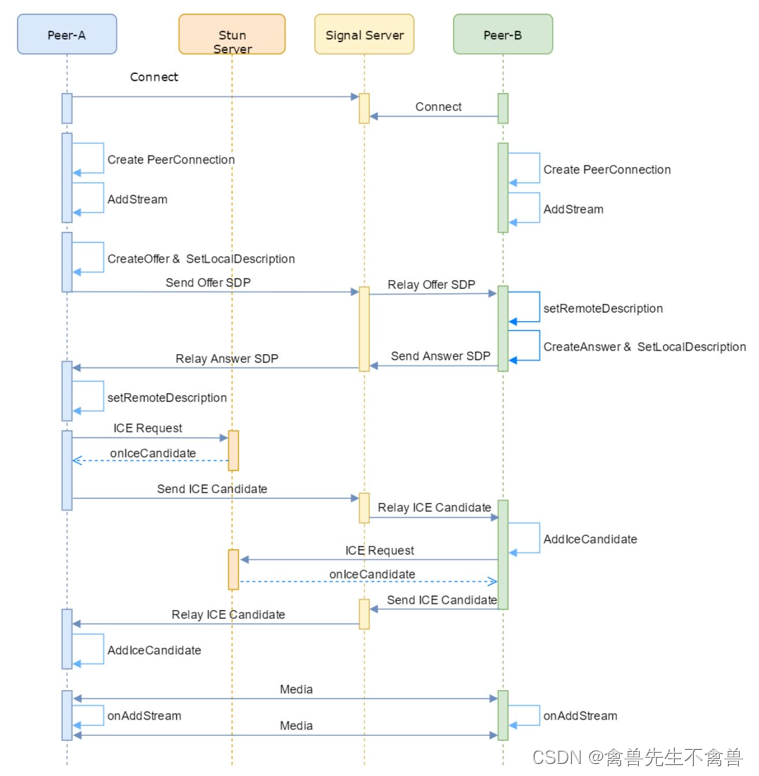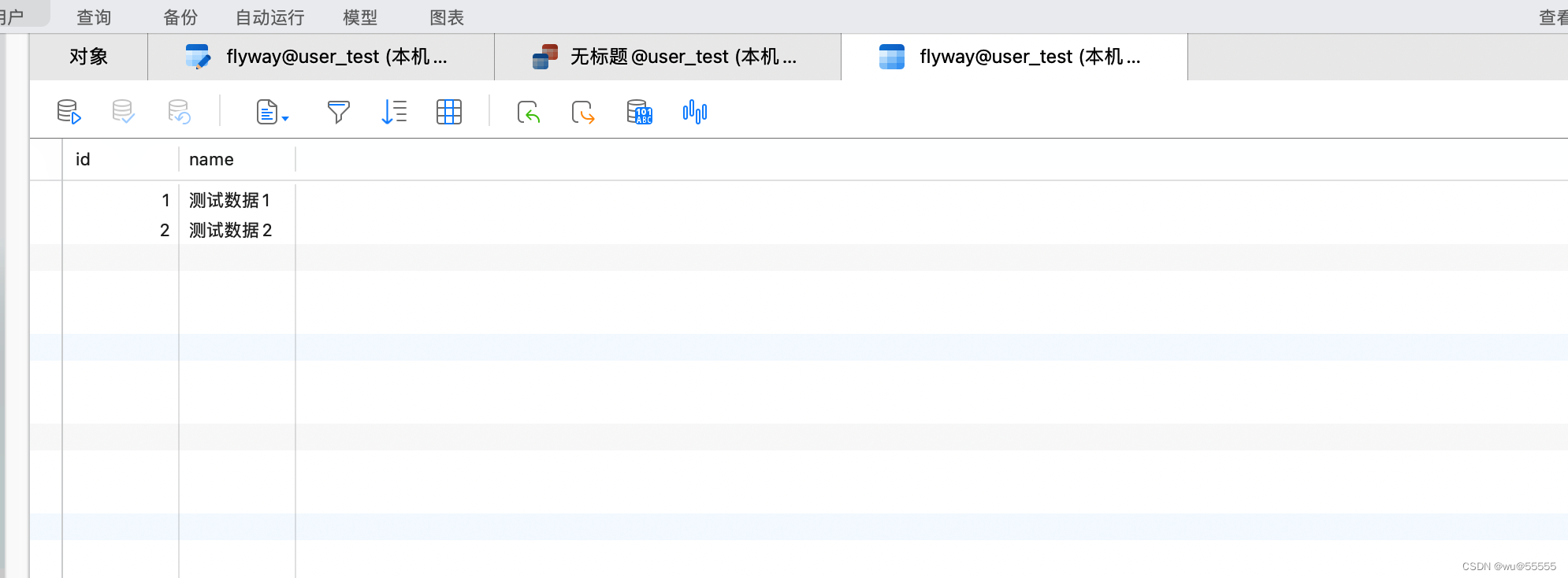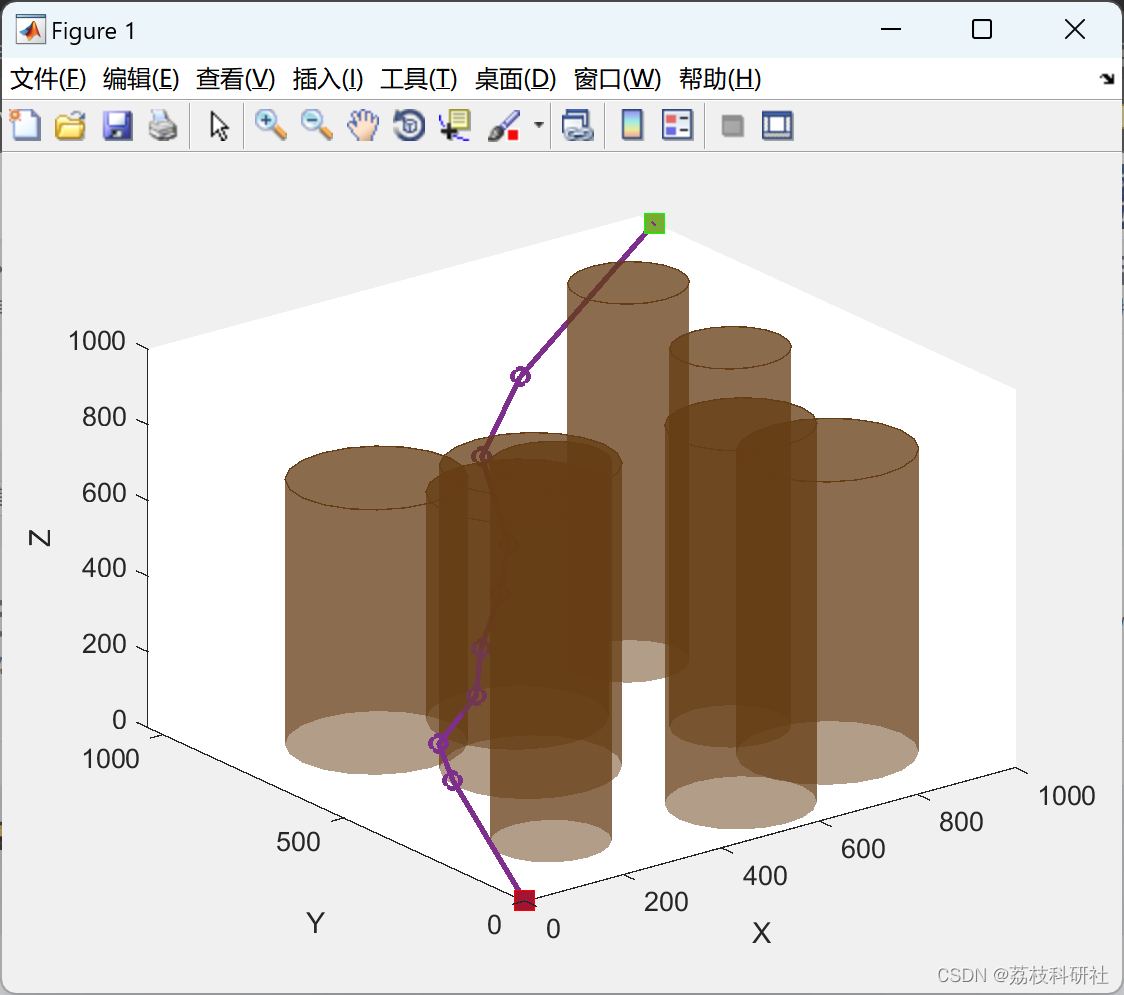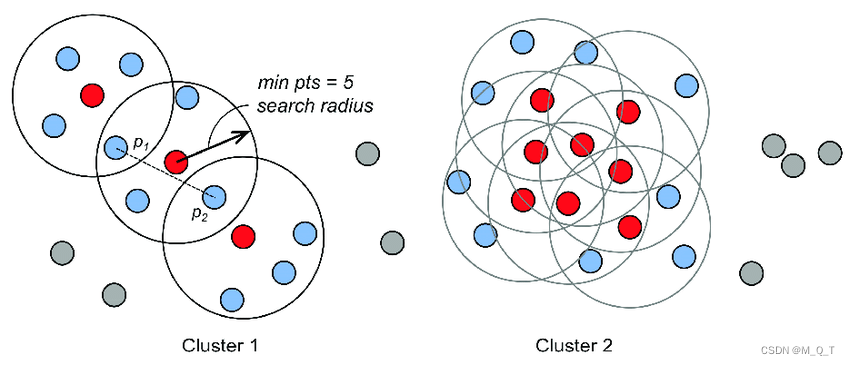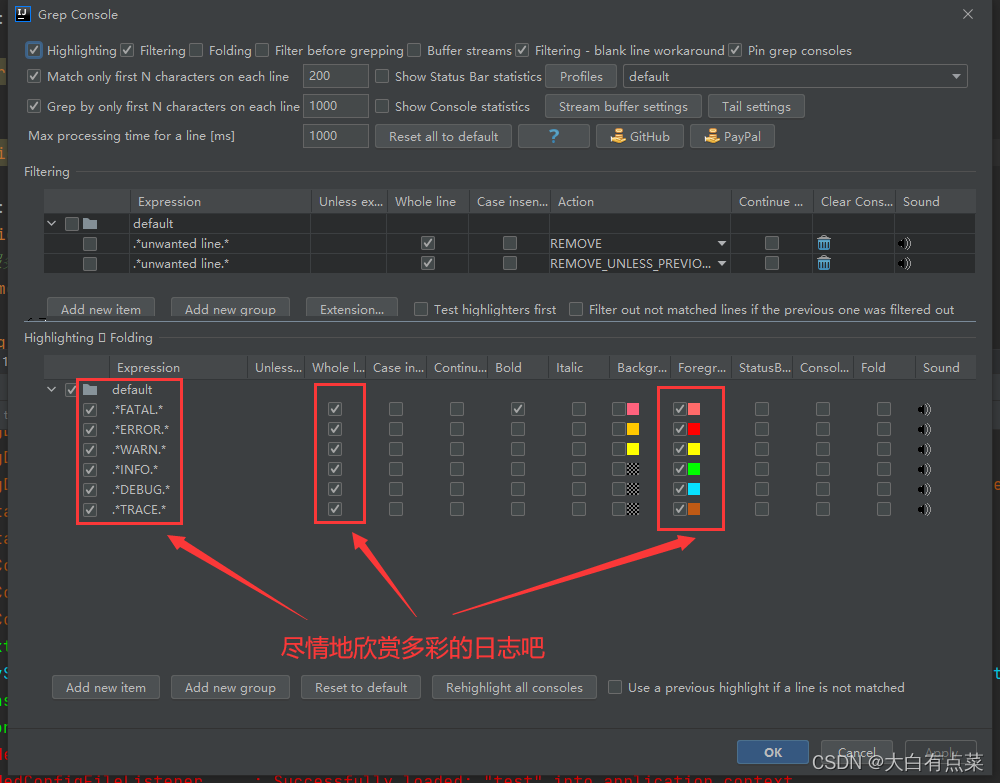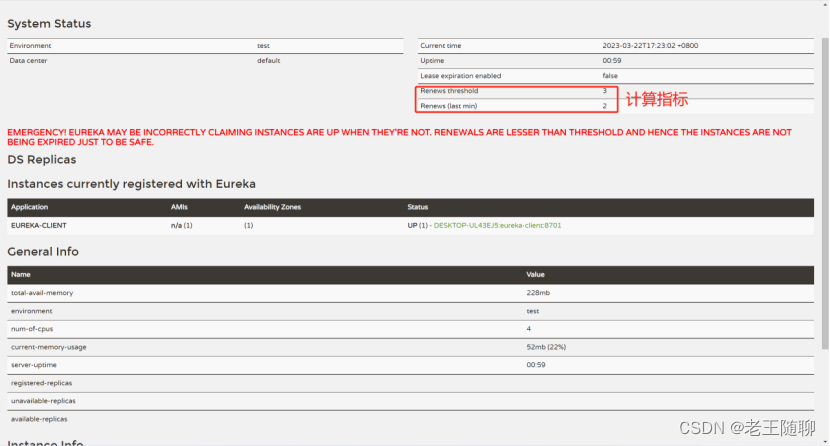
目录
1. 二叉树的锯齿形层序遍历 🌟🌟
2. 从中序与后序遍历序列构造二叉树 🌟🌟
3. 平衡二叉树 🌟
🌟 每日一练刷题专栏 🌟
Golang每日一练 专栏
Python每日一练 专栏
C/C++每日一练 专栏
Java每日一练 专栏
1. 二叉树的锯齿形层序遍历
给定一个二叉树,返回其节点值的锯齿形层序遍历。(即先从左往右,再从右往左进行下一层遍历,以此类推,层与层之间交替进行)。
例如:给定二叉树 [3,9,20,null,null,15,7]
3
/ \
9 20
/ \
15 7
返回锯齿形层序遍历如下:
[ [3], [20,9], [15,7] ]
代码:
public class TreeNode {
int val;
TreeNode left;
TreeNode right;
TreeNode(int x) {
val = x;
}
}
class Solution {
public List<List<Integer>> zigzagLevelOrder(TreeNode root) {
List<List<Integer>> list = new LinkedList<>();
if (root == null) {
return list;
}
Stack<TreeNode> stack1 = new Stack<>();
stack1.push(root);
boolean postive = true;
while (!stack1.isEmpty()) {
Stack<TreeNode> stack2 = new Stack<>();
List<Integer> subList = new LinkedList<>();
while (!stack1.isEmpty()) {
TreeNode current = stack1.pop();
subList.add(current.val);
if (postive) {
if (current.left != null) {
stack2.push(current.left);
}
if (current.right != null) {
stack2.push(current.right);
}
} else {
if (current.right != null) {
stack2.push(current.right);
}
if (current.left != null) {
stack2.push(current.left);
}
}
}
postive = !postive;
stack1 = stack2;
list.add(subList);
}
return list;
}
}2. 从中序与后序遍历序列构造二叉树
根据一棵树的中序遍历与后序遍历构造二叉树。
注意:
你可以假设树中没有重复的元素。
例如,给出
中序遍历 inorder = [9,3,15,20,7] 后序遍历 postorder = [9,15,7,20,3]
返回如下的二叉树:
3
/ \
9 20
/ \
15 7
import java.util.*;
public class buildTreefrominpost {
public class TreeNode {
int val;
TreeNode left;
TreeNode right;
TreeNode(int x) {
val = x;
}
}
public static class Solution {
public TreeNode buildTree(int[] inorder, int[] postorder) {
return helper(inorder, postorder, postorder.length - 1, 0, inorder.length - 1);
}
public TreeNode helper(int[] inorder, int[] postorder, int postEnd, int inStart, int inEnd) {
if (inStart > inEnd) {
return null;
}
int currentVal = postorder[postEnd];
TreeNode current = new TreeNode(currentVal);
int inIndex = 0;
for (int i = inStart; i <= inEnd; i++) {
if (inorder[i] == currentVal) {
inIndex = i;
}
}
TreeNode left = helper(inorder, postorder, postEnd - (inEnd - inIndex) - 1, inStart, inIndex - 1);
TreeNode right = helper(inorder, postorder, postEnd - 1, inIndex + 1, inEnd);
current.left = left;
current.right = right;
return current;
}
}
public static void main(String[] args) {
Solution s = new Solution();
System.out.println(s.buildTree(2));
}
}3. 平衡二叉树
给定一个二叉树,判断它是否是高度平衡的二叉树。
本题中,一棵高度平衡二叉树定义为:
一个二叉树每个节点 的左右两个子树的高度差的绝对值不超过 1 。
示例 1:
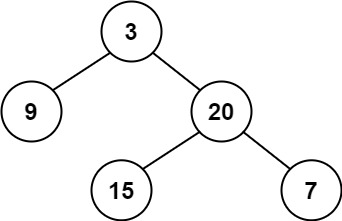
输入:root = [3,9,20,null,null,15,7] 输出:true
示例 2:
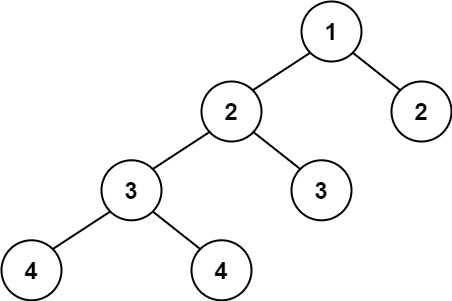
输入:root = [1,2,2,3,3,null,null,4,4] 输出:false
示例 3:
输入:root = [] 输出:true
提示:
- 树中的节点数在范围
[0, 5000]内 -104 <= Node.val <= 104
class TreeNode {
int val;
TreeNode left;
TreeNode right;
TreeNode(int x) {
val = x;
}
}
public class Solution {
public boolean isBalanced(TreeNode root) {
if (root == null) {
return true;
}
return (Math.abs(maxDepth(root.left) - maxDepth(root.right)) <= 1) && isBalanced(root.left)
&& isBalanced(root.right);
}
public int maxDepth(TreeNode root) {
if (root == null) {
return 0;
}
return Math.max(maxDepth(root.left), maxDepth(root.right)) + 1;
}
}🌟 每日一练刷题专栏 🌟
✨ 持续,努力奋斗做强刷题搬运工!
👍 点赞,你的认可是我坚持的动力!
🌟 收藏,你的青睐是我努力的方向!
✎ 评论,你的意见是我进步的财富!
☸ 主页:https://hannyang.blog.csdn.net/
 | Golang每日一练 专栏 |
 | Python每日一练 专栏 |
 | C/C++每日一练 专栏 |
 | Java每日一练 专栏 |
